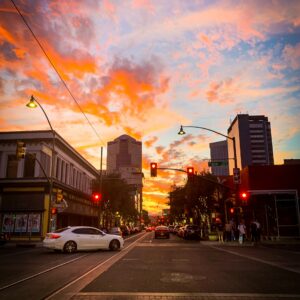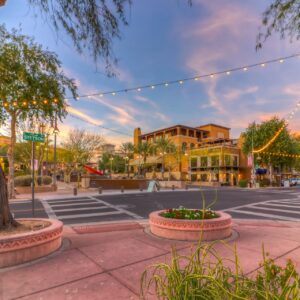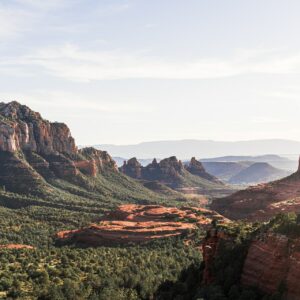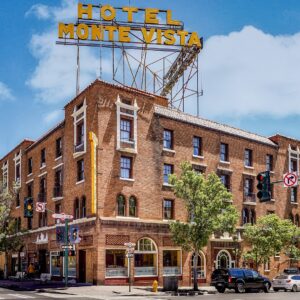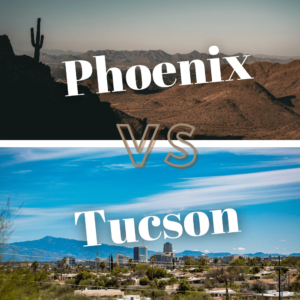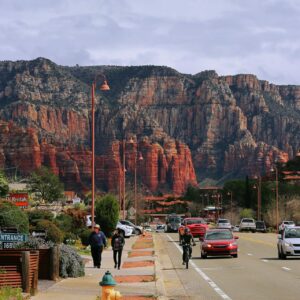Bad Projects for the Future of Arizona
For the future of Arizona, there have been many brilliant ideas that have been proposed over the years. At the same time, there are almost as many bad ones that have sprung up as well.
We have gathered some of the most utterly perplexing proposals that have surfaced and have evaluated each one. Some may actually have some merit in a world with limitless resources, but others are just plain nonsense that would just take up time and money with virtually no benefit.
The real problem with the majority of these ideas is the fact that they just don’t scale well and are not sustainable for the long haul. We have to remember that city planning should take the relatively distant future into account.
Also, planning for the future of any city should take all of the stakeholders of the community into consideration. Several of the ideas at hand are too narrowly scoped and would only benefit a small portion of society.
While these pet projects may have been approved in the past, we have to recognize that the world is not just a playground for private investors. There needs to be a redeeming quality for the public for the development to make sense, too.
With these facts in mind, let’s take a look at some truly wild ideas for the future of Arizona that probably should just be filed away somewhere and never actually be enacted.
Table of Contents
Skyscraper in the Grand Canyon
We’ve heard of the idea to build a skyscraper right in the middle of the Grand Canyon that would rise up and meet the top of the canyon. In order to achieve this feat, the tower would have to become the tallest building in the world and reach a dizzying height of about 4,000 feet.
To put that in perspective, the tallest building currently standing is the Burj Khalifa in Dubai that is almost half of this height at 2,717 feet. The idea of almost doubling the height of the already tallest building is mind boggling.
Disregarding the practicality of this endeavor, a tower of this proportion would need to be developed with the environment around it and make use of innovative designs and materials. We’ve seen everything from cable systems to robots that would build a weave of fabrication.
But, my goodness, what a crazy idea! Why in the world would we build such a massive monument directly in one of the most iconic natural formations on earth? Why ruin the beautiful scenery with such a commercial cash grab?
It would be a huge victory for condo owners and posh travelers, but at the expense of nature. The only way this could benefit the state of Arizona is if they were able to collect taxes and revenue from the hotel or apartments located in the skyscraper. But, we still think that value would pale in comparison to the negative impact that the actual tower would have on the landscape.
River Through Phoenix Suburbs
There have been ideas floated about diverting the Gila River and Salt River that currently cuts through Phoenix all around the greater Phoenix area. It would start by looping the Agua Fria River in the northwestern area of the city to run east and west through Peoria and Glendale. This river would run across the northern part of Phoenix and Scottsdale, expanding the existing Arizona Canal. It would then continue down to Mesa and meet up with the Salt River.
From there, it would run south through Gilbert and Chandler. Eventually, it would then come around back to around the Estrella Mountain Regional Park where the Gila River and Agua Fria River diverge.
The benefits of such a project would presumably be to help with flood irrigation and help to beautify the dry city. But, we also think it a bit over the top to upend such a massive amount of land for the works to be completed.
There may also be private interests who would want to commercialize the river as well. It would be possible for a theme park to carve out a lane of the river and make it the world’s biggest lazy river.
But, just like the Grand Canyon tower, this undertaking would be a severe detriment to the existing landscape. It may be a bit too late to change the physical land of a metropolitan area that is already so developed.
Direct Train Line to Connect North and South Arizona
There have been talks to build a high speed rail line from Tucson all the up to the northernmost part of the state so that all of Arizona can be connected by train.
The problem is that there is just not enough demand to justify such a large-scale project.
It usually costs about $1.5 million per mile of high speed rail. The proposal here would require about 400 miles of track, which would come out to $600 million for just the physical tracks alone. Then, there are the costs for the actual trains as well as the maintenance and the workers, of course.
And all of that for what? How many people are traveling across the state at any given moment? There is much less of a demand to go from Phoenix to Page than from San Francisco to Los Angeles, for example.
The only benefit we see from this type of public works would be the improvement and expansion of public transport options locally in each city that this line would run through. Otherwise, we see this as a boondoggle of a project.
Climate Dome for Phoenix
Southern Arizona is getting hot. Like, really hot. Therefore, there have been ideas floating around to protect Phoenix from the heat by constructing a large dome around the city to be able to regulate its climate.
The idea is not very far off from the Biosphere 2 project that was initiated near Tucson in the desert. But, this would be at a scale far larger than that 3 acre campus.
A dome for Phoenix would need to cover its 517 square miles of area. That comes out to 14,413,132,800 square feet. We will estimate that the cost per square foot is $500 for a dome, which would make the grand total an eye-watering $7,206,566,400,000. That number of zeros equates to $7.2 trillion.
That amount seems quite steep. We are not sure of any city that could afford that amount or justify it, for that matter.
That figure also does not account for any maintenance of the dome or the cost for heating and cooling the dome, either.
But, we do understand the potential benefits that a climate dome could afford to Phoenix. However, the build would need to be done with materials that are somehow carbon positive so that it could actually help the environment. We are confident that this may be a reality one day, but just not at scale now.
More Phoenix Suburbs
The Greater Phoenix Metropolitan Area continues its rapid expansion. Suburbs that were initially built to be quiet areas outside of Phoenix like Mesa have become cities in their own right. You may even say that Mesa itself has gained its own suburbs with Gilbert and Chandler. They are all great places to live, as we ranked all of them on our list of the best places to live in Arizona.
The easy answer would be to continue the growth in the same way by building new suburbs in the vast desert land. There is still plenty of space in southern and western Phoenix to expand into.
But, would that development be sustainable? Instead, why not focus on making the existing towns and cities denser and more livable?
All of these wide open suburbs provide their residence with an ample amount of space, but then therefore require everyone to own a car. What if the city planners identified a core downtown area in each suburb and started to construct more mixed-use developments?
We think that the endless expansion will just lead to more congestion and, eventually, detachment from the actual city itself.
New Arena for the Arizona Coyotes
The Coyotes hockey team is looking for a new arena to warrant staying in Arizona. Their proposal is a new $1.7 billion development in Tempe with some of the funding coming from the state.
But, we ask, what is wrong with their current Gila River Arena or the Suns arena?
Their attendance figures have not been very strong for the last 25 years in this area, so we are doubtful that a new arena would significantly help their fortunes.
We say that they should chip in some money to renovate Gila River Arena or the Suns arena to make it more hockey-friendly. If not, there are several die-hard hockey cities that are just waiting for a franchise to come their way.
Summary
We think that Arizona would be better off as a state if these projects would be put on the shelf and the money and resources were used to help improve the existing infrastructure instead.
It’s always easy to look for new and exciting innovations to enhance a city, but sometimes, you are better off just optimizing what you have first.
Ultimately, we think that there are a lot of good ideas that could actually stem from these projects, but they need to be evaluated in a more inclusive manner and include some sort of public-private partnership to make sure all of the voices of Arizona are heard.
